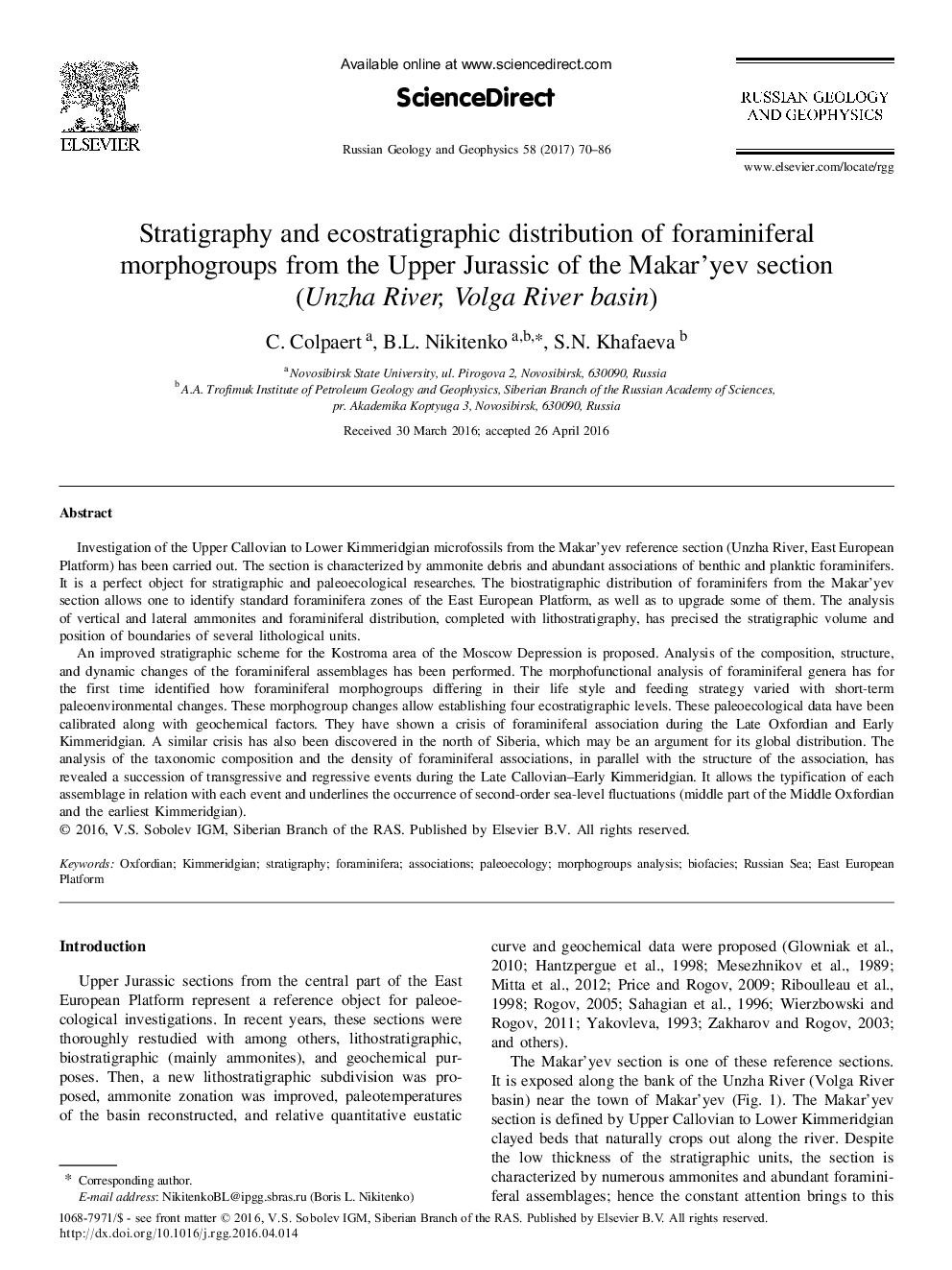| Article ID | Journal | Published Year | Pages | File Type |
|---|---|---|---|---|
| 5787004 | Russian Geology and Geophysics | 2017 | 17 Pages |
Abstract
An improved stratigraphic scheme for the Kostroma area of the Moscow Depression is proposed. Analysis of the composition, structure, and dynamic changes of the foraminiferal assemblages has been performed. The morphofunctional analysis of foraminiferal genera has for the first time identified how foraminiferal morphogroups differing in their life style and feeding strategy varied with short-term paleoenvironmental changes. These morphogroup changes allow establishing four ecostratigraphic levels. These paleoecological data have been calibrated along with geochemical factors. They have shown a crisis of foraminiferal association during the Late Oxfordian and Early Kimmeridgian. A similar crisis has also been discovered in the north of Siberia, which may be an argument for its global distribution. The analysis of the taxonomic composition and the density of foraminiferal associations, in parallel with the structure of the association, has revealed a succession of transgressive and regressive events during the Late Callovian-Early Kimmeridgian. It allows the typification of each assemblage in relation with each event and underlines the occurrence of second-order sea-level fluctuations (middle part of the Middle Oxfordian and the earliest Kimmeridgian).
Keywords
Related Topics
Physical Sciences and Engineering
Earth and Planetary Sciences
Geology
Authors
C. Colpaert, B.L. Nikitenko, S.N. Khafaeva,
